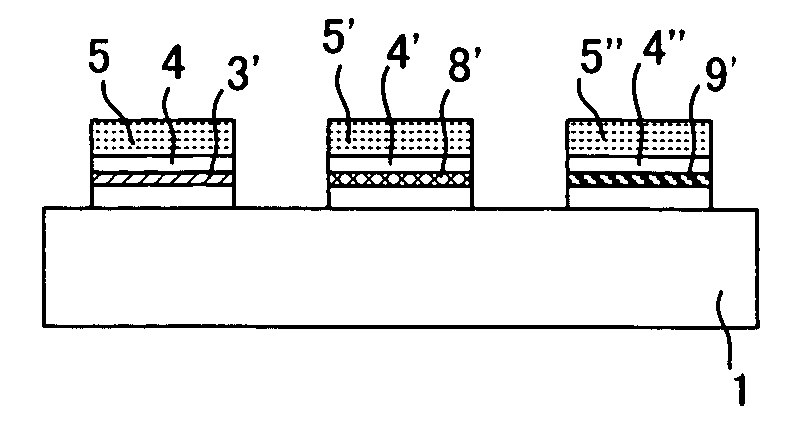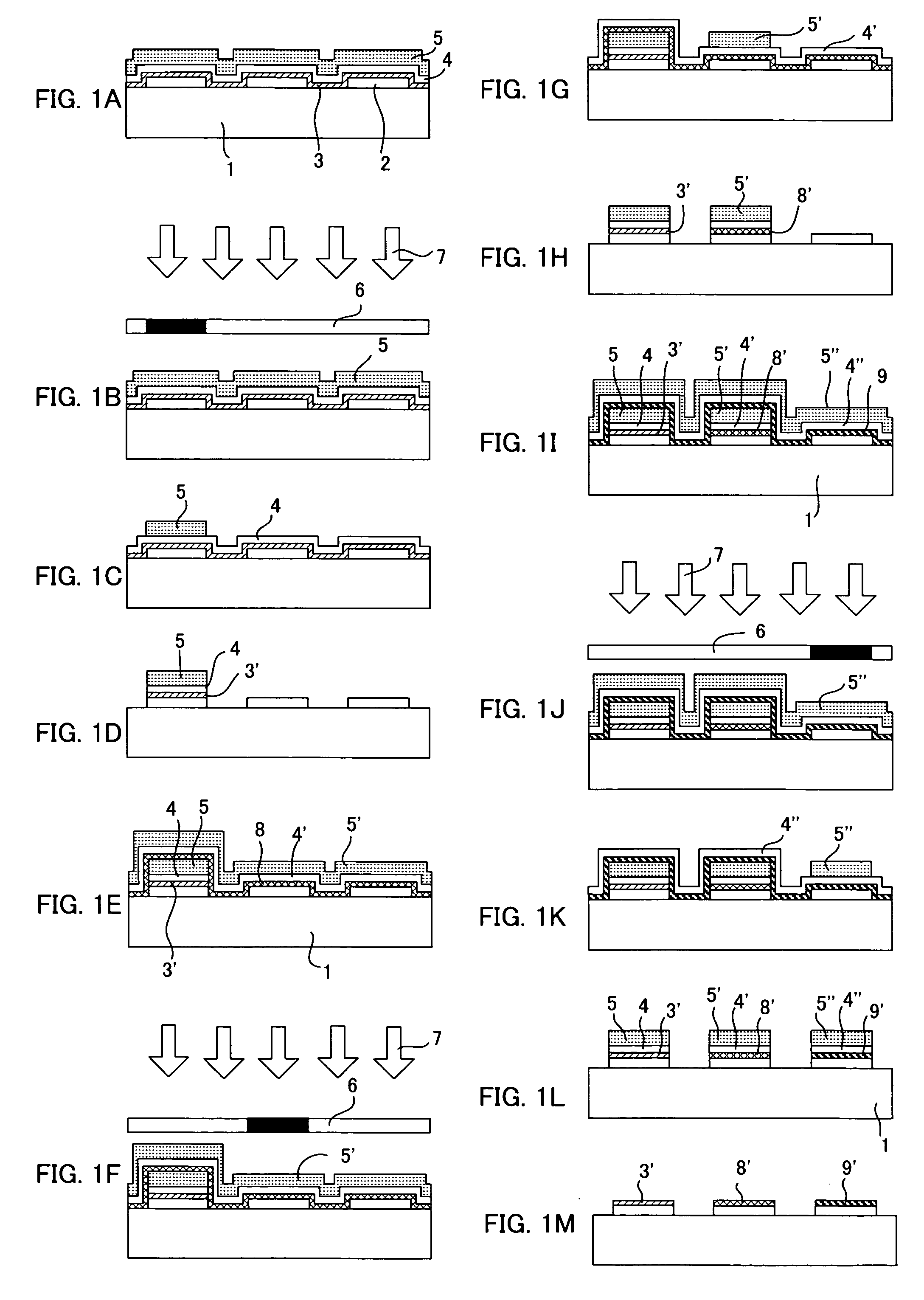Production method for electroluminescent element
- Summary
- Abstract
- Description
- Claims
- Application Information
AI Technical Summary
Benefits of technology
Problems solved by technology
Method used
Image
Examples
first embodiment
(1) FIRST EMBODIMENT
[0120] The first embodiment is an embodiment of patterning each light emitting part such that a light emitting part having a color different from the light emitting part is not laminated on each light emitting part when the patterning of each light emitting part is completed.
[0121]FIGS. 1A to 1M show an example of the method for manufacturing an EL element of the first embodiment. Hereinafter, FIGS. 1A to 1M will be explained specifically.
[0122] First, as shown in FIG. 1A, a first light emitting layer forming coating solution is coated on a substrate 1 having an electrode 2 formed in a pattern, so as to form a first light emitting layer 3 (first light emitting layer forming process). A peeling layer forming coating solution is coated on the first light emitting layer 3 so as to form a first peeling layer 4 (first peeling layer forming process). And furthermore, a positive type photoresist is coated on the first peeling layer 4 so as to form a first photoresist ...
second embodiment
(1) SECOND EMBODIMENT
[0143] The second embodiment is an embodiment of exposing an ultraviolet ray via a mask, in the pattern irradiation carried out when patterning each three color of light emitting layers, such that a photoresist layer disposed on an area where the light emitting part, which is a subject to be patterned, will be formed and on the light emitting part already formed in a pattern remains.
[0144] That is, when patterning the second light emitting layer, the pattern irradiation is carried out such that the photoresist layer remains on the area, where the second light emitting part will be formed, and on the first light emitting part already formed in a pattern.
[0145]FIGS. 2A to 2M show an example of the method for manufacturing an EL element of such second embodiment. Hereinafter, FIGS. 2A to 2M will be explained specifically.
[0146] First, as shown in FIG. 2A, a first light emitting layer forming coating solution is coated on a substrate 1, having an electrode 2 form...
example 1
[0166] A patterned ITO substrate of a 6 inch square and 1.1 mm plate thickness was cleaned. 0.5 ml of a buffer layer coating solution (Baytron P manufactured by Bayer Yakuhin, Ltd.) was taken and dropped onto the central part of the substrate and carried out a spin coating. By maintaining at 2,500 rpm for 20 seconds, a layer was formed. As a result, the film thickness was 800 Å.
[0167] As the first light emitting layer, 1 ml of a 1 wt % xylene solution of a polyparaphenylene vinylene derivative light emitting polymer MEH-PPV was taken on the buffer layer, and dropped onto the central part of the substrate and carried out the spin coating. By maintaining at 2,000 rpm for 10 seconds, a layer was formed. As a result, the film thickness was 800 Å.
[0168] As the peeling layer, 1 ml of a 3% ethyl acetate solution of a urea based resin (Laropal manufactured by BASF) was taken and dropped onto the central part of the substrate and carried out the spin coating. By maintaining at 2,000 rpm fo...
PUM
 Login to View More
Login to View More Abstract
Description
Claims
Application Information
 Login to View More
Login to View More - R&D
- Intellectual Property
- Life Sciences
- Materials
- Tech Scout
- Unparalleled Data Quality
- Higher Quality Content
- 60% Fewer Hallucinations
Browse by: Latest US Patents, China's latest patents, Technical Efficacy Thesaurus, Application Domain, Technology Topic, Popular Technical Reports.
© 2025 PatSnap. All rights reserved.Legal|Privacy policy|Modern Slavery Act Transparency Statement|Sitemap|About US| Contact US: help@patsnap.com



